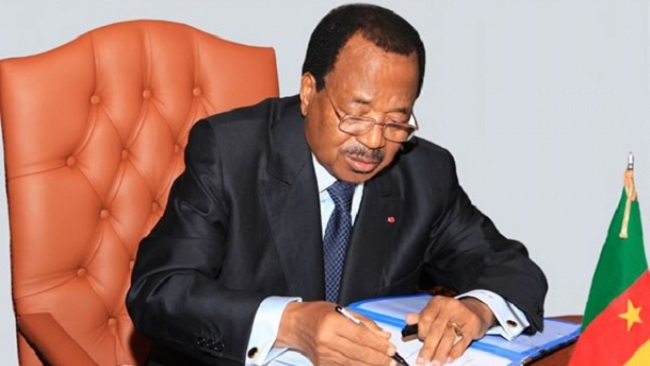Jihadists linked to Al Qaeda in the Islamic Maghreb (AQIM) have multiplied attacks in the west, but also in the outskirts of Bamako.In Mali, the New Year has been marked by a proliferation of security incidents.
The Support Group for Islam and Muslims (GSIM), a federation of jihadist organisations close to Al Qaeda in the Islamic Maghreb (AQIM), is multiplying attacks in the centre and west of the country.
On January 2, the jihadists instigated two raids in Kassela and Marka Coungo, killing at least four people, including three Malian firefighters and an environmental and forestry protection officer.
A little over a week later, the same group claimed responsibility for two attacks on two gendarmerie checkpoints in Didiéni and Sébikoro, also in central and western Mali.
One gendarme was killed in these assaults.
The insurgents repeated the attack on January 12 in Siby, some 50 kilometres from Bamako. The next day, the town of Nara, also in the Koulikoro region, was the target of an attack in which two Malian soldiers were killed.
Two days later, the GSIM was responsible for an operation targeting an army security mission in Kwala-Mourdiah, in the Koulikoro region.
Four soldiers and one civilian lost their lives.
In its claim, AQIM’s Sahelian affiliate said it had commandeered two Malian Armed Forces vehicles as well as weapons and ammunition.
Jihadists at the gates of Bamako
All these attacks share the particularity of being carried out either in the west or near the capital, Bamako.
After the double attack in Sébékoro and Didiéni, the jihadists affiliated to AQIM claimed that they were settling in the “suburbs of Bamako”.
Senior researcher at the Moroccan think tank Policy Center for the News South (PCNS) based in Rabat, Rida Lyammouri sees in this series of raids a certain resilience of the jihadists.
“The jihadis are far from being weakened or even defeated,” he says.
“Worse, the JNIM (Arabic acronym for GSIM) was able to target locations close to the capital Bamako, which indicates the group’s continued expansion and the threat in general,” he adds.
Last July, the jihadist coalition launched an offensive against the Soundiata Keita camp in Kati, less than 20 kilometres from the capital.
The group said it had carried out this raid against the heart of Malian power as it was considered the decision-making centre of the military in power since May 2021, in response to operations by the Malian army and Wagner mercenaries, before announcing a series of actions in urban centres.
But a relative decline in attacks on Malian military targets was noted in the last quarter of last year.
The fact is rare enough to be highlighted by several observers of the jihadist insurgency that the West African country has been facing for the past decade.
Many of them explained this “lull” referring to the fratricidal war between jihadist groups during the same period.
Clashes were witnessed between the GSIM and the Islamic State in the Sahel (EIS), for the control of localities in the regions of Gao and Ménaka, in the north of the country.
For others, it is the result of joint operations between the Malian army and its Russian “cooperators” in the centre, although many allegations of abuses against civilians are reported by human rights organisations.
Sources also mentioned the resumption of negotiations between the jihadist group close to AQIM and the transitional authorities.
Interrupted dialogue?
This approach was first taken by the regime of Ibrahim Boubacar Keita (IBK).
In March 2020, the Malian authorities acknowledged that they had sent emissaries to the GSIM to negotiate.
Iyad Ag Ghali and Amadou Kouffa, the main leaders of this Sahelian jihadist coalition, had not opposed the principle of talks.
However, they had demanded the departure of French forces.
In August 2020, IBK was overthrown by young colonels, following a series of demonstrations by the June 5 Movement – Rally of Patriotic Forces (M5 – RFP), under the leadership of the cleric Imam Mahmoud Dicko.
The arrival of the military in power did not banish the option of dialogue with the jihadists, despite the disagreement of Paris, formerly Bamako’s main ally in the war against the jihadists, whose forces left Mali in August 2022 after nine years of presence as new rapprochement developed between the West African country and Russia.
In October 2021, six months after the “rectification” of the transition, bringing Colonel Assimi Goïta to power, the High Islamic Council (HCI) was given a “mandate” to establish contact with radical Islamists.
A few days later, and to everyone’s surprise, the transitional government retracted the mandate.
This de facto backtracking does not mean that there is no willingness to talk to the jihadists.
According to information reaching APA, attempts to re-establish contact between the two parties were witnessed outside Malian territory early last year.
But after the upsurge in violence in the centre in recent days and the expansion of the threat to the west, security sources are convinced that “this is the result of the stalemate in the negotiations”, without giving further details.
If this is the case, who is responsible? For the moment, there is no answer to this question.
What is visible, however, is the will on both sides to use military means to win the war.
While the GSIM is multiplying its assaults, the Malian army continues to acquire aerial means, including armed drones of the Bayraktar type from the manufacturer Baykar, in its fight against terrorism.




